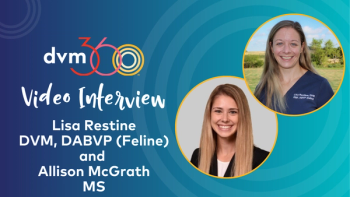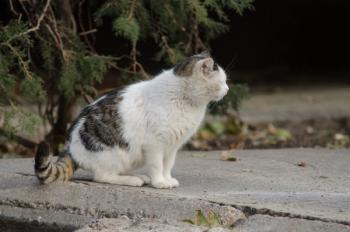
Failed TNR legislation in Fla. prompts tense debate over feral cats
Veterinarians form foundation, offer alternative to TNR.
Legislation introduced in Florida has ignited tense debate among various groups over how to manage feral cat colonies. House Bill 1121 and its counterpart, Senate Bill 1320, both sought to define feral cats as “community” cats and stipulate that the practice of “trap-neuter-release” (TNR, also referred to as “trap-neuter-return”) does not constitute abandonment or unlawful release of cats. The legislation, which eventually died in committee, was supported by pro-TNR groups, but it prompted others to call it legalized hoarding, a threat to public health and an endangerment to the welfare of feral cats.
Becky Robinson, president and co-founder of Alley Cat Allies, has supported and worked with TNR programs for the past 20 years. She says the community cat legislation in Florida isn’t anything new—Illinois and Utah have enacted similar bills—it simply explains and clarifies the trap-neuter-release strategy and gets it “on the books.” She says 331 communities in the U.S. have pro-TNR statutes. “TNR has been around for two decades, but for a lot of places it’s new as policy,” Robinson says. “When it comes to the law, it’s just clarifying what’s already being done.”
She says the feral cat colonies where TNR was first applied are now greatly reduced or even eliminated due to die-off. “It shows that TNR works. The neutering and vaccinating is effective,” Robinsons says. “The neutering and vaccinating saves money and it’s also money citizens want to spend to save animals and not end their lives.”
However, Don Thompson, JD, CVPM, president and owner of Veterinary Center at Fishhawk in Lithia, Fla., says the pro-TNR groups are misleading. “Alley Cat Allies will tell you everyone supports this,” Thompson says. But once people understand the risks to public health, wildlife predation and the welfare of feral cats, he says, “nobody supports this.”
The Hillsborough Animal Health Foundation (HAHF), of which Thompson is executive director and his wife, Katie Thompson, DVM, DABVP (canine and feline), is a member, opposed the community cat legislation. “We can’t support this policy. It doesn’t work,” Don Thompson says. The foundation, founded in 1987 by Tampa-area veterinarians, states on its website that there are no studies that prove TNR is effective in reducing the feral cat population. “Taking on TNR isn’t a popular position,” Thompson concedes. “But in the end, we’ve got to come up with another solution.”
As an alternative, the foundation has developed a program called “AWAKE,” which it believes is more effective than TNR. AWAKE stands for “Animal Welfare, Adoption, Kids and Education” and calls for responsible cat ownership, enforcement of existing ordinances, partnerships with rescue groups, and managed, contained cat colonies. AWAKE’s solution is to take the “release” out of the TNR approach. Its method is to trap, evaluate, neuter, vaccinate, adopt and contain. Many TNR groups oppose AWAKE, saying it’s motivated by business interests and not animal welfare.
Robinson says she can’t comment on the AWAKE strategy, but she can speak to what she knows works and what doesn’t. She believes containment—or what HAHF refers to as managed feral colonies with natural or artificial restrictive barriers—is doomed to fail. “There’s never going to be enough sanctuary,” she says. “That’s unrealistic.” She estimates there are millions of feral cats across the country.
But AWAKE supporters are adamant that cats belong indoors or contained to prevent the risk of zoonotic disease, specifically rabies, toxplasmosis, intestinal parasite infection and bartonellosis. The group advocates for managed and monitored cat colonies with “all inhabitants sterilized, tested, vaccinated, dewormed and microchipped.” According to the AWAKE management plan, the program would utilize funds already provided by Hillsborough County and other nongovernmental organizations that subsidize free and low-cost veterinary care and other services to feral cat caretakers.
Robinson says that because cats are vaccinated, feral cat colonies do not pose a threat to public health. Thompson says that’s opinion; it’s debatable. But whether a cat can pass zoonotic disease—he says that’s fact. “They are telling our state of Florida there is no risk from these cats,” he says.
“‘Rabies’ is a word that induces fear in some people,” Robinson says. “The risk of catching rabies from a feral cat is virtually nonexistent. The cats that are trapped humanely and transferred are not only spayed and neutered but vaccinated for rabies. There’s research that shows they live healthy lives outside and don’t spread disease to people,” Robinson says.
And that’s where negotiations cease, as far as Thompson and the Hillsborough Animal Health Foundation are concerned. “We all have to at least agree that there is a risk,” Thompson says. “We’re so far off I don’t know where to go.”
While both camps say it’s important that the “facts” be understood, the facts appear to be different for each side. “We’re so far apart on facts, I don’t know how we press forward in a practical way,” Thompson says. “Let’s have a rational discussion to get a rational solution.”
Robinson says there are plenty of rational veterinarians across the country who participate in and support TNR. “There are veterinarians in every single state that are part of these programs,” she says. She considers the Hillsborough Animal Health Foundation to be minority opposition. “It’s a very, very small group of veterinarians compared to the actual numbers of veterinarians participating in TNR,” she says.
Supporters of the AWAKE strategy plan to propose their own bill in the next legislative session. “We’re going to come back with a very comprehensive bill on a state level and try to work with Best Friends and the humane society so we do reduce the euthanasia rate,” Thompson says. Supporters of this year’s bill plan to reintroduce their legislation in 2014 as well.
For more information on the AWAKE program, go to
Newsletter
From exam room tips to practice management insights, get trusted veterinary news delivered straight to your inbox—subscribe to dvm360.






